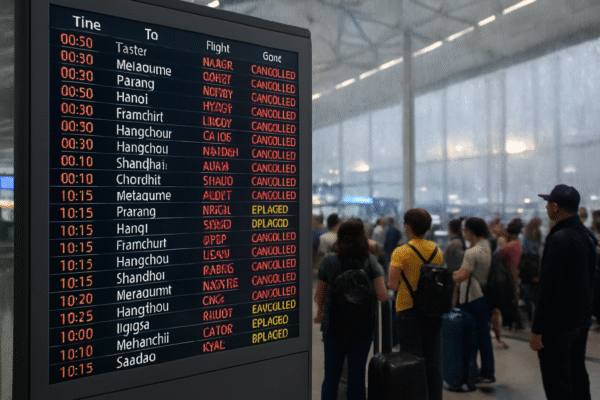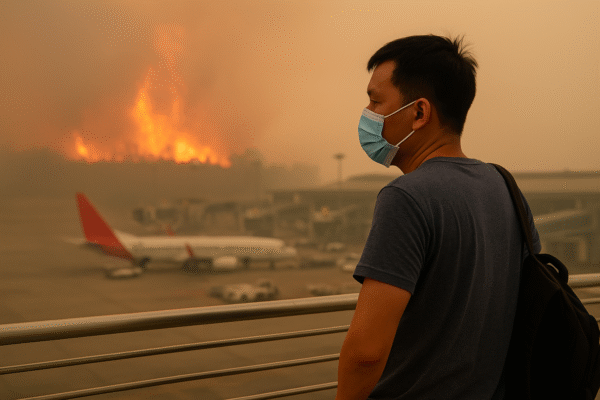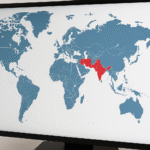Canada Issues Travel Warning for Costa Rica Amid Crime Spike and Tourist Tragedy
Costa Rica’s tourism sector is under renewed scrutiny following a Canadian government travel advisory warning visitors to exercise increased caution due to rising crime, including a tragic incident involving a Canadian tourist in Tamarindo.
On August 11, 2025, the Government of Canada reissued an updated travel advisory for Costa Rica, raising the risk level to a yellow “Exercise a High Degree of Caution” alert. The move follows a fatal robbery of a Canadian national in Tamarindo, a popular surf and beach destination in Guanacaste Province, on July 11. The Canadian man was killed during an assault at a vacation rental property—an event that has amplified concerns about violent crime targeting foreigners.
While Costa Rica has long been viewed as a peaceful and eco-friendly destination in Central America, recent trends in drug-related violence, property crime, and petty theft have begun to tarnish its tourism-friendly image, particularly for North American travelers.
Rising Violent Crime Prompts Caution from Canadian Government
Canada’s travel advisory cites an uptick in violent crime across several Costa Rican provinces, including San José, Limón, Alajuela, and Puntarenas. These areas—frequented by international visitors—have seen increased reports of armed robberies, assaults, and gang activity linked to drug trafficking routes.
According to the Government of Canada’s travel.gc.ca, visitors are urged to avoid displaying wealth, use reputable accommodations, and remain vigilant, especially at night or when using ATMs. In particular, rental accommodations in high-tourism areas such as Tamarindo, Jacó, and Puerto Viejo are seeing a rise in burglaries and break-ins targeting foreigners.
Costa Rican officials have emphasized that the nation continues to be a safe destination for millions of travelers, yet the perception of increasing crime is proving difficult to reverse, especially in Canada—a key source market.
Travel Safety Tips for Canadians Visiting Costa Rica
In its advisory, the Canadian government encourages travelers to take basic safety precautions, particularly when staying in rental properties. Travelers should:
- Avoid carrying large amounts of cash.
- Use credit cards or digital payment options where possible.
- Stay in well-reviewed, secure accommodations with 24/7 staff or surveillance.
- Avoid walking alone at night in urban or rural areas.
- Keep passports and valuables securely stored.
- Be cautious around public transport hubs like the Coca-Cola bus terminal in San José and markets like Mercado Central.
- Exercise vigilance in coastal towns such as Jacó, Quepos, Manuel Antonio, and Puerto Viejo, where petty crime has also been reported.
Travelers can stay updated by checking the Canadian government’s Travel Advice and Advisories page for Costa Rica.
Canadian Arrivals Decline as Crime and Flight Access Collide
Recent tourism statistics show a measurable decline in Canadian tourist arrivals to Costa Rica. According to Instituto Costarricense de Turismo (ICT), Canadian visitation dropped 5.3% year-over-year in May 2025, with a larger 5.8% dip reported in February.
Tourism professionals suggest this downward trend is driven not only by safety fears but also by limited flight availability from Canada. Seasonal airline reductions and fluctuating demand have made it harder for Canadians to access Costa Rica, compounding the impact of negative safety headlines.
Still, Costa Rica remains Canada’s second most popular Central American destination after Mexico, with more than 230,000 Canadian visitors in 2024, according to ICT.
Regional Tourism Shifts Reflect Broader Patterns
While Costa Rica is feeling the impact of waning Canadian tourism, other Latin American countries are seizing the opportunity. The Dominican Republic, for instance, has seen a surge in visitors from South America, offsetting losses from North America. The shift suggests travelers are becoming more risk-conscious and connectivity-driven, gravitating toward destinations perceived as safer and easier to access.
Tourism experts warn that Costa Rica must act swiftly to rebuild traveler confidence or risk losing ground to regional competitors. Measures such as increased police patrols in tourist zones, better vacation rental regulations, and airport security cooperation could help bolster its image as a secure, welcoming destination.
Costa Rica’s Tourism Sector Looks to Rebuild Trust
As Costa Rica prepares for its upcoming high tourism season, the government and local tourism businesses are ramping up efforts to mitigate crime and restore its global image. Investment in community policing, tourist assistance services, and public awareness campaigns are among the initiatives designed to safeguard visitors.
The country also continues to promote its natural treasures—from rainforests and volcanoes to national parks and wellness retreats—which remain a major draw for eco-conscious and adventure travelers.
Despite current setbacks, industry analysts remain cautiously optimistic that Canada–Costa Rica travel will rebound in late 2025 and into 2026—particularly if airlines expand connectivity and safety reforms take effect.
Final Word for Travelers: Stay Informed, Stay Safe
Costa Rica still offers world-class biodiversity, beaches, and culture, but travelers—especially from Canada—should follow official guidelines, choose accommodations wisely, and stay alert. With proper planning and awareness, the country can still be a rewarding destination, even amid its current challenges.
As always, Canadian travelers are advised to register with the Registration of Canadians Abroad program for emergency updates and to consult travel.gc.ca before departure.
For more travel news like this, keep reading Global Travel Wire



















